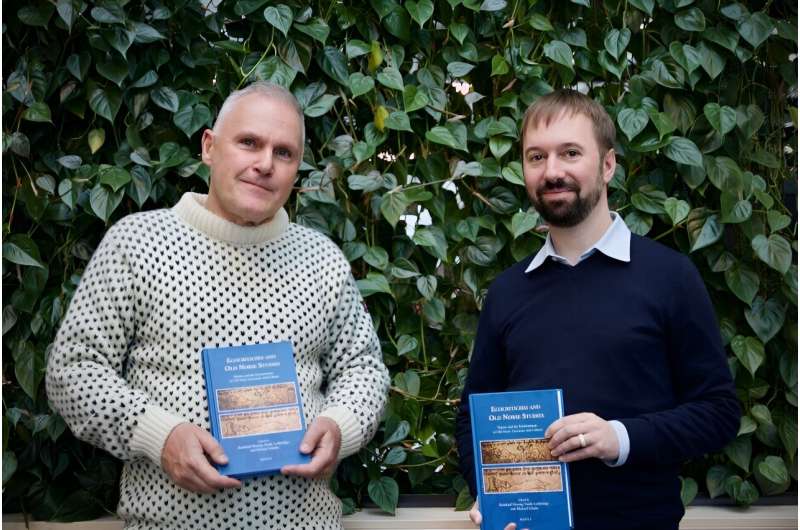This article has been reviewed according to Science X's editorial process and policies. Editors have highlighted the following attributes while ensuring the content's credibility:
fact-checked
proofread
Studying old texts using modern climate lenses

In Norse mythology, Ragnarok signifies the end of the world. But in modern popular culture, Ragnarok has also been equated with the climate crisis.
Examples of this can be seen in the Netflix series Ragnarok or in the graphic novel Embla.
But what did people in the Middle Ages themselves think about their place in nature? And can they help us to think differently about this in our own time?
Culture and environment
"I don't think we will find a solution to the climate crisis in Norse literature. When we imagine a possible climate crisis in Ragnarok-like terms, it says more about what we humans fear today than what they did in pre-modern times," says Professor Reinhard Hennig in the Department of Nordic and Media Studies at the University of Agder (UiA).
He believes that an ecocritical perspective on Norse texts can still provide us with new knowledge, including how people in pre-modern times considered sustainability and problematic environmental changes.
Ecocriticism is a research approach within literary studies that looks at the relationship between human culture and the environment around us.
Desire to expand ecocriticism
Hennig is one of the editors of the book "Ecocriticism and Old Norse Studies: Nature and the Environment in Old Norse Literature and Culture." He put it together with Michael Schulte, his UiA colleague, and Emily Lethbridge at the Árni Magnússon Institute in Iceland.
Studying Norse texts from an ecocritical perspective has not been very common, but the editors of the new anthology hope to change that.
"Nature motifs in Norse texts have been studied before. But what characterizes the ecocritical approach is the environmental interest—whether the texts have ecological relevance in any way, either for us today or for people in the past," says Hennig.
Texts from a transitional period
In his own contribution to the anthology, Hennig reads the Icelandic sagas from a modern environmental perspective. It is about invisible dangers that emerge without knowing what or who is behind them.
"In these sagas, there are several instances where people suddenly fall ill and die, or where they are attacked by unknown creatures. It's a mixture of nature and culture, a contamination that threatens to destroy entire regions. It can strongly resemble modern events like the Chernobyl accident," he says.
The Icelandic sagas describe the transition from paganism to Christianity as a time characterized by great uncertainty. This uncertainty is evident among people, in the social sphere that is, but also in the form of ominous environmental changes.
Another text in the book addresses how the understanding of concepts like "wilderness" has changed over time. While wilderness today is a place for recreation and beautiful experiences of nature, in the Middle Ages it was a dangerous place where both holy and ordinary people were tested.
A third contribution shows how Church law adapted to the environment and climate of the Nordic countries—for example, by allowing herring fishing on holy days.
"We wanted to show that ecocriticism is not limited to a specific type of text or period. Both literary texts, such as the sagas and the Poetic Edda, and other texts, such as laws, are interesting to study from this perspective," says Hennig.
New ideas and old thoughts
One challenge with ecocriticism is that it can be influenced by current mindsets. This makes it important for researchers to have the cultural knowledge of the time in which the texts were produced.
"For example, the concept of sustainability is from the 18th century, and we only started talking about sustainable development in the 1980s. But even older societies had to manage natural resources in sustainable ways to preserve the livelihood for their children and grandchildren," says Hennig.
He adds that if we want to find traces of sustainability thinking in Norse texts, we must consider the texts in light of the literary tradition, culture, and society they were a part of in pre-modern times.
"In the book, we show some possible ways to do this, but also discuss problems and challenges with ecocritical readings of Norse texts," he says.
The anthology Ecocriticism and Old Norse Studies is published by Brepols and is available as an open access publication.
Provided by University of Agder





















